At the end of every trail, a labyrinth awaits.
— Saint Attila
###
That’s what I posted to my Facebook page last January, to accompany this photo taken a few miles north of La Paz, Mexico.
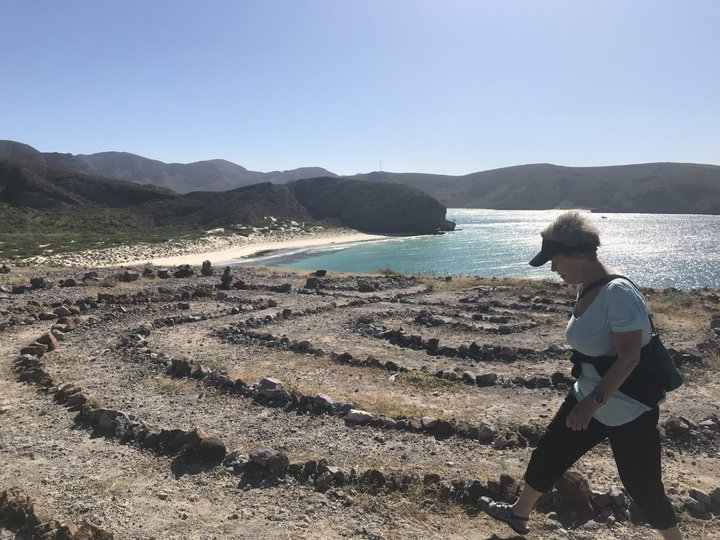
Author photos, unless otherwise credited.
Sure enough, some innocent soul wanted to know who Saint Attila was. Like the joke that has to be explained, I didn’t have the heart to tell her that I tried to come up with the most unlikely person in history for canonization. Ego sum Attila flagellum Dei, he’s supposed to have said, “I am Attila, the scourge of God.” I’m pretty sure that the possibility of sainthood for the leader of the Huns back in the fifth century was about as likely as my receiving a Pulitzer.
I digress. I really wanted to talk about labyrinths, having just revisited what a plaque proclaims as “The SoHum Labyrinth” in Garberville’s lovely community park. Here it is, as of last Sunday, a little more weedblown than the last time we walked it five years ago, but quite serviceable nonetheless. It’s not like we were in a hurry.
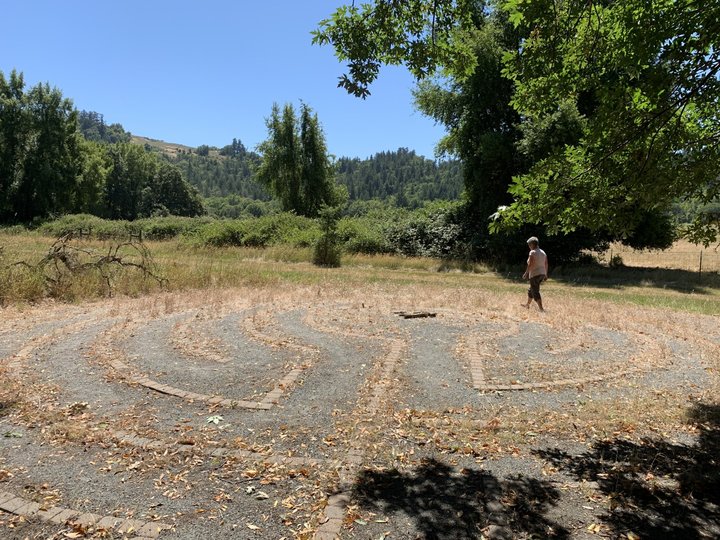
This, like most labyrinths you might stumble on, is the “classical” design. How classical? Very. Here’s a silver coin from Knossos, Crete, from around 400 BC. Note the seven “courses” between the outside and the center.
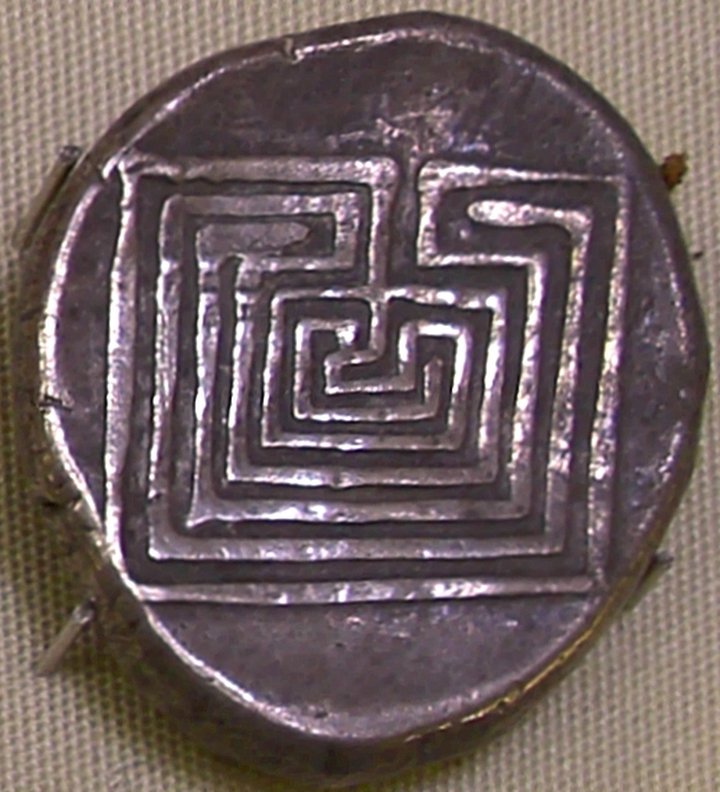
AlMare, Creative Commons
Not to be outdone by those polytheistic Greeks, the medieval Christian church added a few more courses, starting with everyone’s favorite, the labyrinth in Chartres cathedral in northwest France, installed around 1220. Here’s the layout, with eleven courses:

Sebastián Asegurado, public domain
—and the real thing:
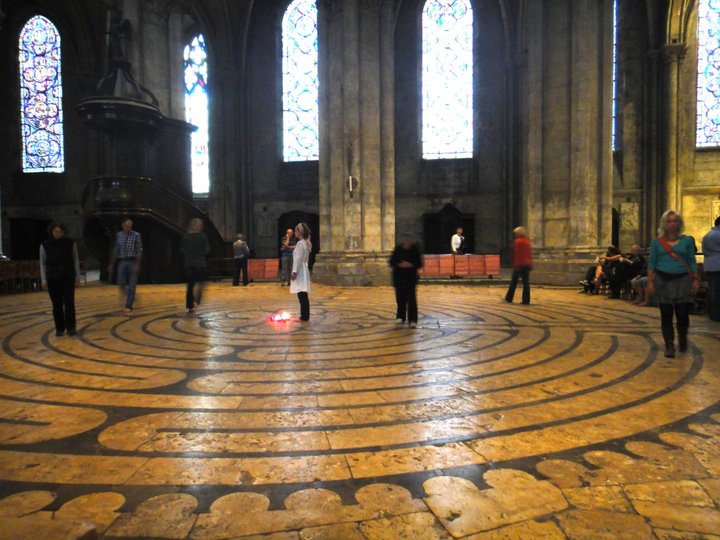
— which you can experience in replica (both indoors and outdoors) at Grace Cathedral, San Francisco.
Of course, labyrinths don’t have to be round — the one shown on the coin is square, while another of France’s Gothic cathedrals, at nearby Amiens, is octagonal, but with essentially the same layout as at Chartres:
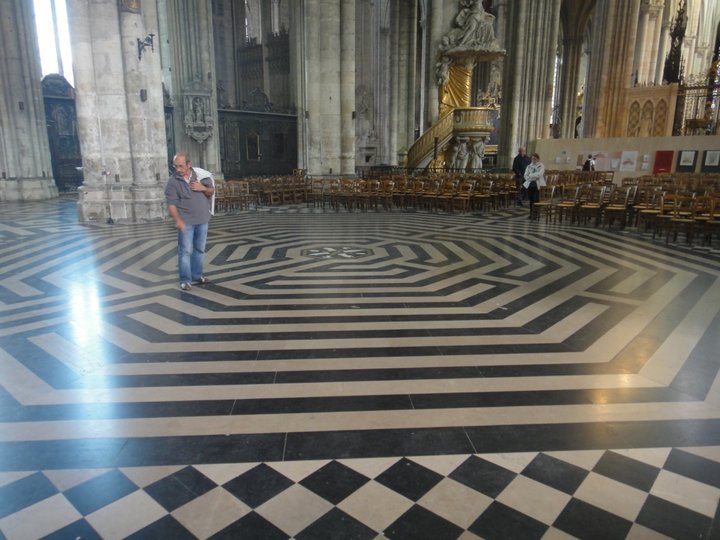
Labyrinths are central to the myth of Theseus, who entered one — perhaps at Knossos, there’s some doubt — to slay the half-man, half-bull minotaur, who was trapped inside. Why didn’t he just walk out? Maybe it wasn’t a “unicursal” (single path) labyrinth, but an actual maze with many confusing branches. Fortunately for Theseus, the king’s daughter, Ariadne, had the hots for him. She gave him a ball of thread so he could find his way out after killing the minotaur. Which probably isn’t the image one should fixate on while reverently walking a modern labyrinth in solemn meditation.
If labyrinth walking is your thing, Humboldt’s your place — we have several, including both St. Joe’s and Redwood Memorial hospitals, Humboldt Botanical Garden, Peninsula School…just Google ’em.
CLICK TO MANAGE